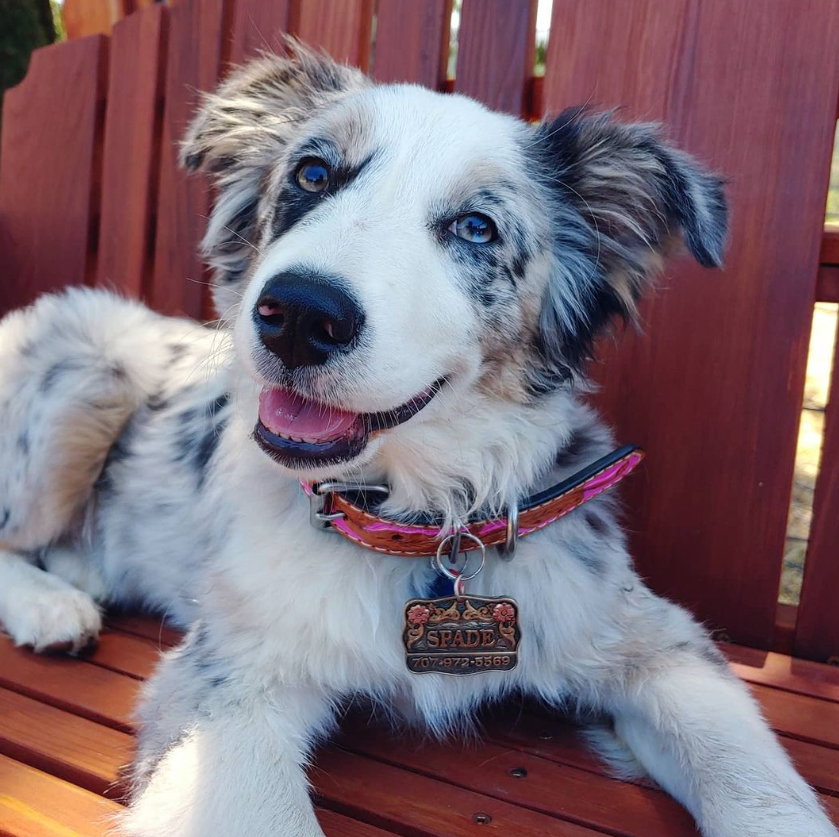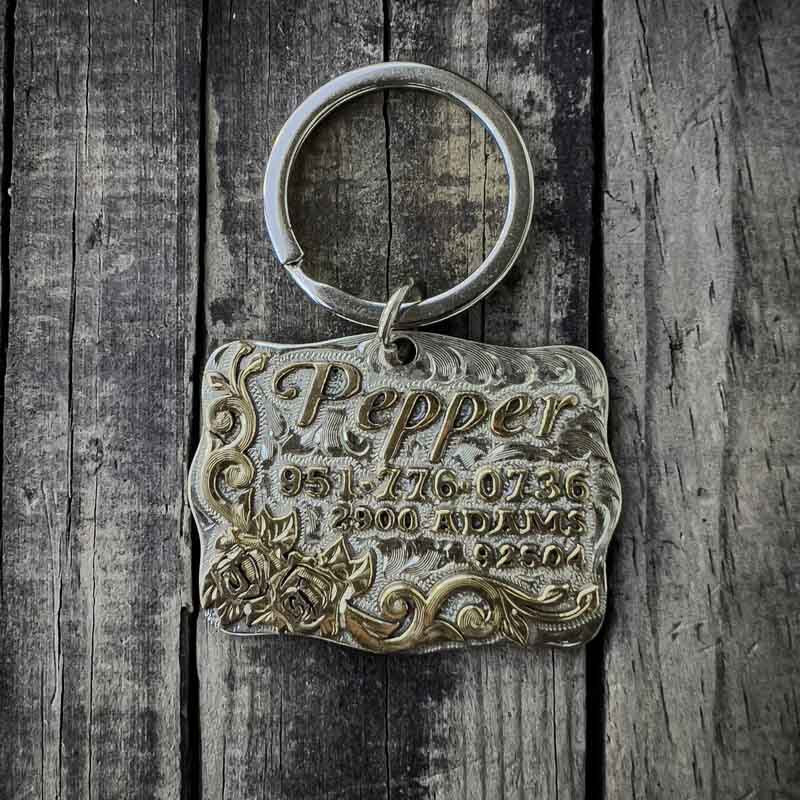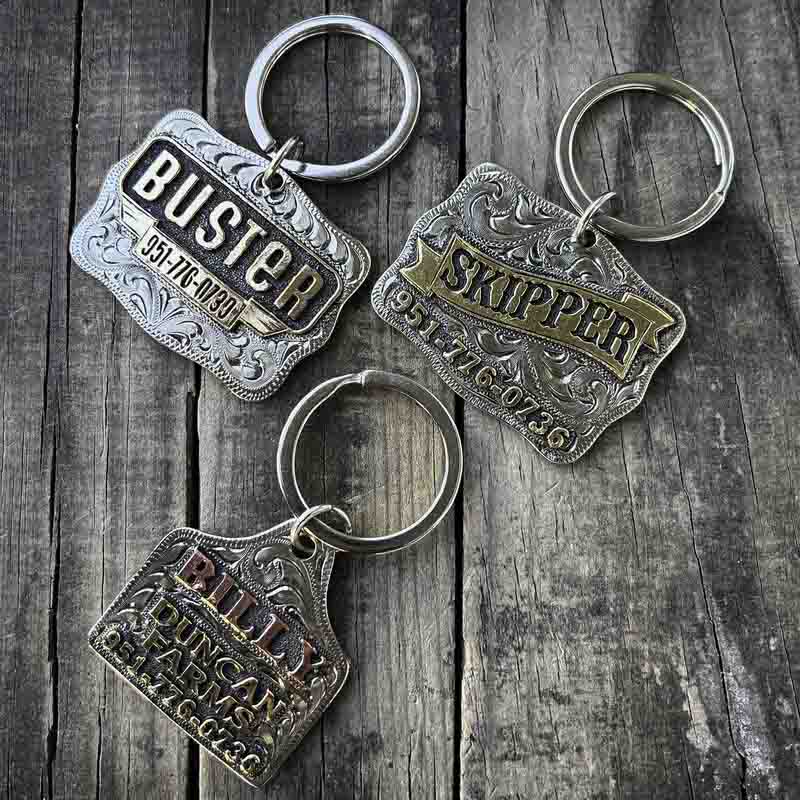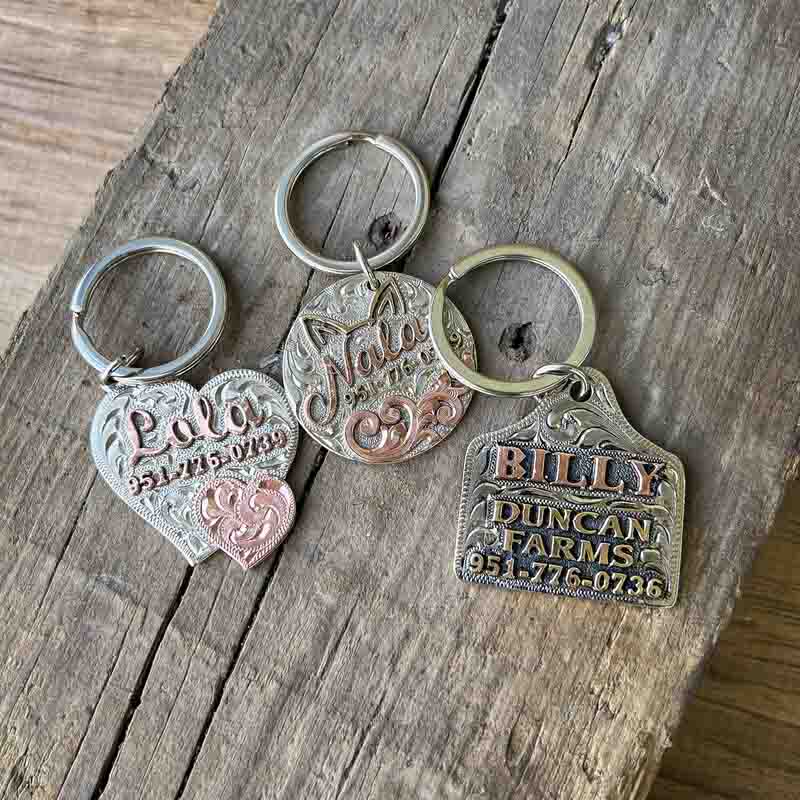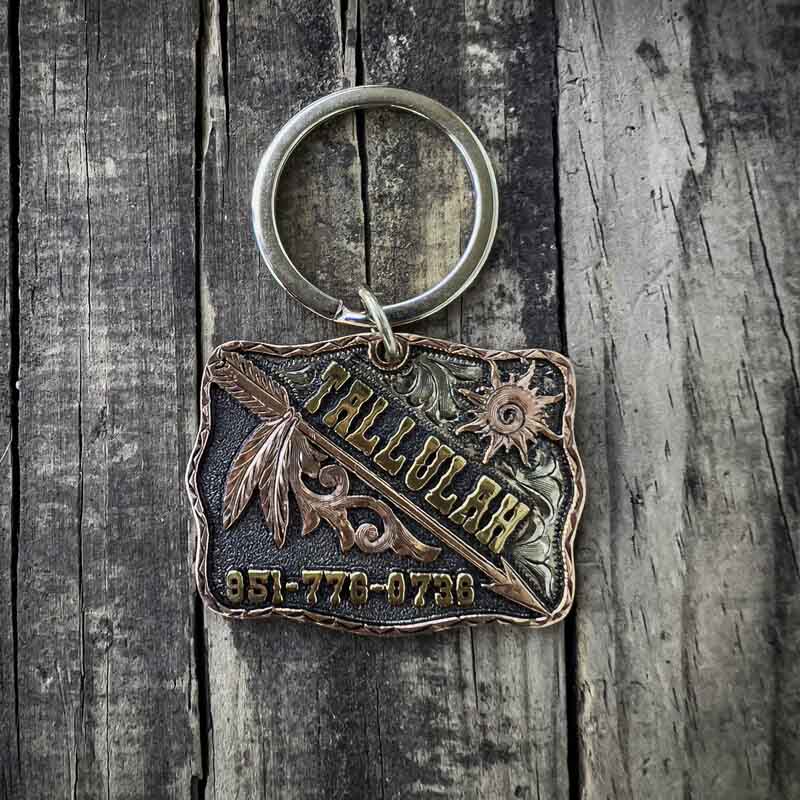In general, dogs may initially notice the presence of tags on their collar, but most can adapt to wearing them without issue. Ensuring tags are lightweight and properly fitted can minimize any potential discomfort. It's also important to introduce tags gradually and positively reinforce their presence to help dogs acclimate more easily. Overall, with proper introduction and suitable tag design, most dogs do not find them annoying.
Custom dog tags serve multiple purposes. Firstly, they provide vital identification information such as the pet's name, owner's contact details, and sometimes medical information, helping ensure a swift reunion if the pet gets lost. Additionally, custom tags allow pet owners to showcase their pet's personality through unique designs, colors, and engravings. This personalization not only adds a touch of style but also enhances the emotional connection between the owner and their pet. Furthermore, custom tags can include specific instructions or messages, such as behavioral notes or allergy alerts, which can be crucial for the pet's well-being and safety.
Having two dog tags offers added redundancy and security. Firstly, it allows for more comprehensive identification information to be displayed, such as multiple contact numbers or alternative addresses, increasing the chances of a successful reunion if the pet gets lost. Secondly, having two tags reduces the likelihood of vital information becoming obscured or illegible due to wear and tear, ensuring that the pet's identification remains clear and accessible at all times. Additionally, if one tag becomes lost or damaged, the second tag serves as a backup, maintaining the pet's identification until a replacement can be obtained. Overall, having two dog tags provides enhanced peace of mind for pet owners, knowing that their furry friend's identification is doubly secure
When creating a custom pet tag, it's essential to prioritize the safety and privacy of both the pet and the owner. To avoid potential risks, it's advisable to refrain from including sensitive or unnecessary personal information such as the owner's full name, home address, or any details that could compromise security. Additionally, avoid including information that may invite strangers to interact with the pet, such as overly friendly messages or invitations to approach. Instead, focus on essential details such as the pet's name and a reliable contact number where the owner can be reached in case of an emergency. This ensures that the tag serves its primary purpose of facilitating a quick and safe reunion if the pet becomes lost while maintaining the owner's privacy and security.

![]() Each handcrafted piece is backed by a repair warranty*, ensuring durability and quality that transcends time.
Each handcrafted piece is backed by a repair warranty*, ensuring durability and quality that transcends time.![]() We offer prompt express delivery. Unlimited dog tag orders arrive within 40-50 days, with in-stock options delivered even sooner (1-2 days).
We offer prompt express delivery. Unlimited dog tag orders arrive within 40-50 days, with in-stock options delivered even sooner (1-2 days).![]() Tailor your dog tag exclusively online at mollyscustomsilver.com or by reaching out to our Customer Service Experience at (682) 717-1770
Tailor your dog tag exclusively online at mollyscustomsilver.com or by reaching out to our Customer Service Experience at (682) 717-1770
